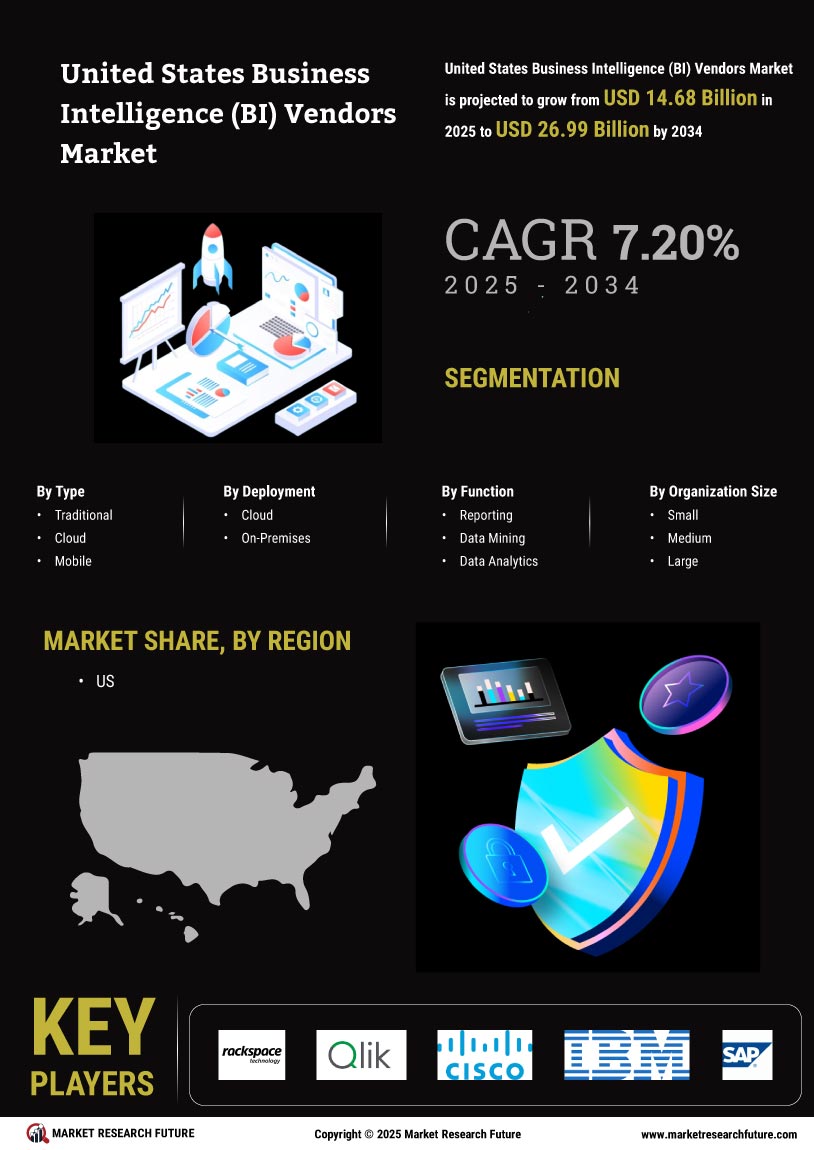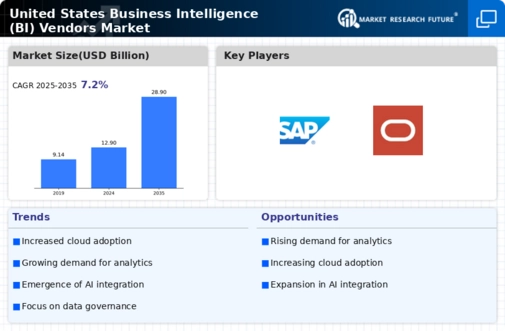United States Business Intelligence Vendors Market Summary
The United States Business Intelligence (BI) Vendors market is projected to grow significantly from 13.72 USD Billion in 2024 to 28.89 USD Billion by 2035.
Key Market Trends & Highlights
United States Business Intelligence (BI) Vendors Key Trends and Highlights
- The market is expected to achieve a compound annual growth rate (CAGR) of 7.59 percent from 2025 to 2035.
- By 2035, the market valuation is anticipated to reach 28.9 USD Billion, indicating robust growth potential.
- in 2024, the market is valued at 13.72 USD Billion, reflecting a strong foundation for future expansion.
- Growing adoption of advanced analytics due to increasing data-driven decision making is a major market driver.
Market Size & Forecast
| 2024 Market Size | 13.72 (USD Billion) |
| 2035 Market Size | 28.89 (USD Billion) |
| CAGR (2025-2035) | 7.00% |
Major Players
Rackspace US, Inc., QlikTech International AB, Cisco Systems Inc., IBM Corporation, SAP SE, Microsoft Corporation, Tableau Software, Oracle, ADVIZOR Solutions, Inc., MicroStrategy Incorporated













Leave a Comment